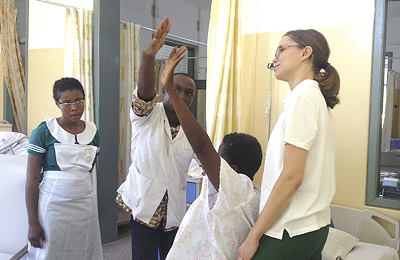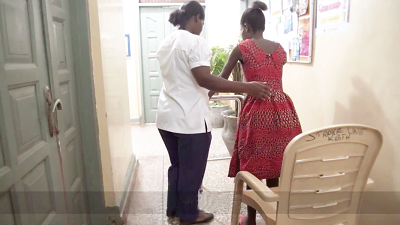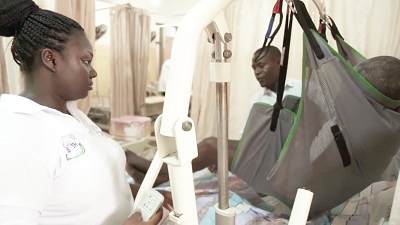
Dealing with stroke-Intensive training, improved facilities needed
Last Monday, October 29, Ghana joined the rest of the world to mark this year’s World Stroke Day to raise awareness and advocate an improvement of stroke care services.
A few years back, it was rare to see a young person (below 45) with stroke as most of the risk factors, hypertension, diabetes and high blood pressure were associated with old age.
Advertisement
Doctors have attributed the rise of stroke in relatively younger people to lifestyle choices such as smoking, excessive alcohol consumption, poor eating habits and lack of exercise.
Although the numbers of stroke cases increase nationwide, facilities and skilled personnel to attend to these patients are not adequate.
At last year’s event in Kumasi, a Neurologist at the Komfo Anokye Teaching Hospital, Dr Fred Stephen Sarfo, said about 40 per cent of stroke patients who sought treatment at the facility hardly survived.
It was reported that 233 out of 369 people admitted at the facility for the condition within that period could not survive.
The high mortality rate was attributed to lack of trained personnel and logistics to manage cases in the country.
Dr Sarfo cited CT scan, hoist machines for lifting of patients, sliding sheet or board and a special bed for proper diagnosis and treatment as some of the equipment in short supply.
Addressing stakeholders at a meeting on Monday as part of activities to mark this year’s World Stroke Day, the Deputy Programme Manager for Non-Communicable Diseases Control Programme, Dr Efua Commeh, said most district and regional hospitals lacked adequate facilities and stroke-friendly personnel to take care of stroke patients.
As a result, about 50 per cent of stroke patients who reported to these facilities died because they did not get adequate care.
Multidisciplinary team approach
According to the head of the Stroke Unit at the Korle Bu Teaching Hospital, Dr Kwodwo Oduro Nkromah, unlike some other conditions which could be managed by health professionals in a particular field, handling stroke needed collaborative efforts of doctors, nurses, dieticians, physiotherapist, pharmacists, speech and language therapists, psychologists and occupational therapists.
He said the unit at Korle Bu had achieved some successes because of the involvement of these different professionals.
He said it was also very important to involve relatives of patients in the discharge plan so they learn to take care of them (patients) properly before they are discharged.
“This multidisciplinary team approach has been very effective in reducing deaths and disabilities among stroke patients as it gives a comprehensive plan to helping patients recover.”
In some instances, the medical team had to visit the homes of patients to ensure that the conditions at home were friendly.
He also explained that it was important to monitor the positioning and handling of patients, nutrition and swallowing as well as their mood and communication signals as some of these things when not done properly could worsen the condition of the patient.

Uncontrolled hypertension
Dr Nkromah said most of the cases recorded at the unit were as a result of uncontrolled or poorly managed hypertension.
“Some patients stop taking medications to control the blood pressure after a few weeks and assume they are better; the truth is these conditions cannot be cured completely but if they are managed properly, the patient stands a lower risk of coming down with stroke.”
He said the current trend was worrying as most people within their productive age could not fully recover after a stroke attack.
“Sadly one third of stroke patients may die, a third may have to live with some sort of permanent disability, while one third may recover to quite a good functional state. So if we even lose one third of people within the ages of 25 to 50, the impact affects the families, the society and the nation as a whole,” he explained.
Identifying stroke
A stroke occurs when the blood supply to part of your brain is interrupted or reduced, depriving brain tissue of oxygen and nutrients. Within minutes, brain cells begin to die hence stroke is a medical emergency.
The symptoms of stroke show suddenly most of the time. However, there are some visible signs which when identified early can help reduce the impact of the disease.
FAST is an acronym used to help detect and enhance responsiveness to the needs of a person having a stroke.
F stands for facial drooping, A for arm weakness, S for speech difficulties and
T for time to call emergency services or report to a medical facility.
Although the symptoms are not limited to those stated above, identifying these symptoms can help prevent further complications.





